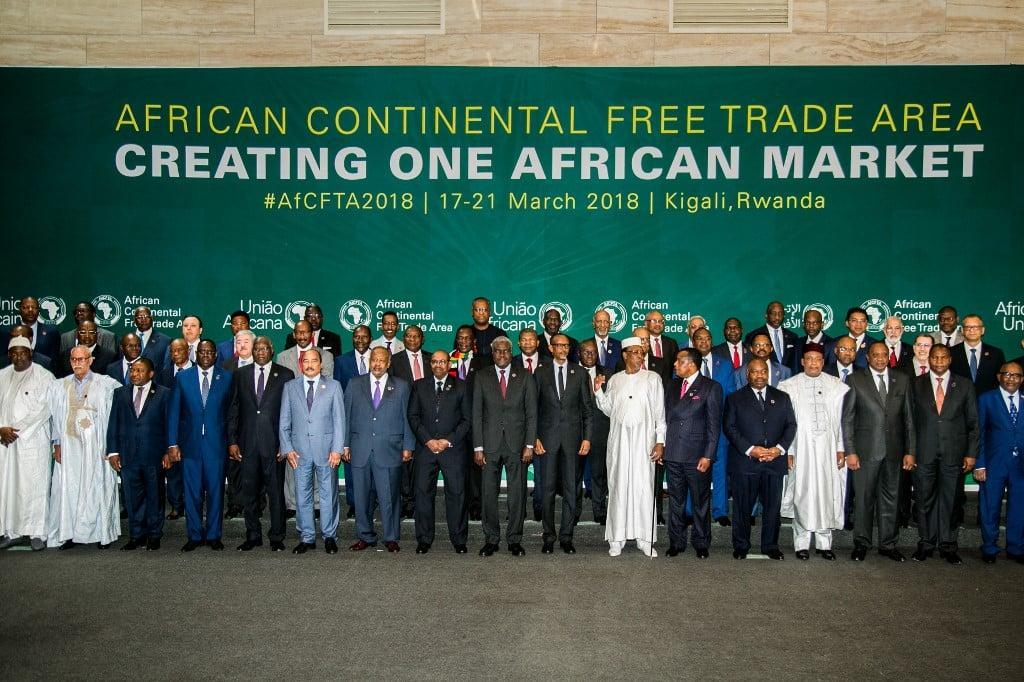
Africa-Press – Gambia. Introduction
Echoing the sentiment of H.E. President Adama Barrow, the Minister of Public Service, Administrative Reforms, Policy Coordination and Delivery, Hon. Baboucarr Bouye, last year firmly indicated that 2024 would be the “Year of Delivery”. One of the key areas where I believe the Government of the Gambia should strive to accelerate delivery on is the African Continental Free Trade Area (AfCFTA) Agreement.
As it is widely known by now, the AfCFTA entered into force on May 30, 2019, after 24 member states deposited their Instruments of Ratification. This came on the heels of a series of continuous engagements and negotiations by continental stakeholders that could be traced to 2012, when at the African Union Summit in Addis Ababa leaders agreed to establish a new Continental Free Trade Area by 2017. In the event, the agreement was formally signed in Kigali, Rwanda, on March 21, 2018 and the condition for its effectiveness was ratification by a minimum of 22 states. It is notable that the ratification by the Gambia of the AfCFTA Agreement constituted an important triggering factor towards the coming into force of the AfCFTA, being the 22nd country to do so.
It is useful to note at this stage that the establishment of the AfCFTA represents an important culmination of efforts started by Africa’s foremost Pan-African leaders like Kwame Nkrumah, Haile Selashie, Gamal Nasser, Julius Nyerere, Jomo Kenyatta, Sekou Toure, Kenneth Kaunda etc in the immediate post-Independence years to attain continental unity, forge greater economic integration and reduce the continent’s dependence on donor support and vulnerability to external forces. Thus, in 1963, the Organization of African Unity (OAU) was founded by the then independent states of Africa. The OAU aimed to promote both close political and economic cooperation between African states.
The Lagos Plan of Action was introduced in 1980 by the OAU and adopted by the African states. The Plan vigorously pushed an agenda for promoting intra-African trade and eventual full integration. It paved the way for the creation of a number of regional and subregional cooperation organizations in the different regions of the continent, such as SADC, ECOWAS, EAC, ECCAS etc. Eventually, these processes led to the Abuja Treaty in 1991, which created the African Economic Community, an organization that promoted the development of free trade areas, customs unions, an African Central Bank and an African Common Currency Union.
In 2002, the OAU was transformed into the African Union (AU), one of whose key goals was the acceleration of the “economic integration of the continent”. A second important goal was to “coordinate and harmonize the policies between the existing and future Regional Economic Communities for the gradual attainment of the objectives of the Union.” Under the AfCFTA Agreement, member states are committed to eliminating tariffs and non-tariff barriers on most goods and services over a period of 5, 10, or 13 years, depending on the country’s level of development or the nature of the products. General long-term objectives include creating a single, liberalized market; reducing barriers to movement of capital and labor to facilitate investment; developing regional infrastructure; and establishing a continental customs union. The ultimate goals of AfCFTA are to help the transformation of Africa’s economies, particularly through more sustainable industrialization, reduce poverty and make the continent more competitive in the global economic arena.
The coordination of the implementation of the AfCFTA Agreement has been entrusted to the AfCFTA Secretariat, that is based in Accra, Ghana. Trading under the AfCFTA formally began on January 1, 2021, but the implementation start up was slowed down by the COVID 19 Pandemic at the time. Currently, only 8 countries are engaged in meaningful trade under the AfCFTA regime and they are Cameroon, Egypt, Ghana, Kenya, Mauritius, Rwanda, Tanzania and Tunisia. Undoubtedly, full implementation of the AfCFTA Agreement and accompanying frameworks will take a few more years.
As the well-known Chinese saying goes: “A journey of a thousand miles begins with a single step”. But it is critically important that all the African countries, including the Gambia, urgently take the necessary first steps and accelerate the march towards the full realization of the enormous potentials the AfCFTA provides for the continent’s transformation and inclusive development. In the next section of this article, we will look at those potentials before zeroing in on what the Gambia stands to gain from its active participation in the AfCFTA.
The assessed benefits and challenges of AfCFTA implementation
Much has been written by academicians, CSOs, policy research analysts and international development organizations over the past few years about the significant potential benefits of AfCFTA as well as the challenges that have to be overcome in order for these expected benefits to be actually realized. Foremost among the latter are the African Development Bank (AfDB), the United Nations Economic Commission for Africa (UNECA), the United Nations Conference on Trade and Development (UNCTAD) and the World Bank. The ECA and World Bank extensively utilized econometric modeling, applying, inter alia, the computable general equilibrium (CGE) and trade gravity models in the process.
Computable General equilibrium models estimate the impact of changes in policy, technology and other exogenous variables on the economy as a whole. The gravity model as applied to international trade assesses the factors that influence the volume of trade among countries. The basic underpinning principle of the gravity model is that trade among countries is proportional to the economic size (density) of the trading partners but inversely related to the distances between them.
The ECA estimates that when fully implemented, the AfCFTA will result in the creation of a single market for goods and services of about $1.3 billion people across the African continent and a combined GDP of around $3.4 trillion. It will be the biggest grouping of countries within a single economic grouping by number in the world.
The World Bank has carried out two comprehensive and noteworthy quantitative studies on both the potential benefits and challenges presented by AfCFTA: the first was in 2020 entitled “The African Continental Free Trade Area: Economic and Distributional Effects” and the second one in 2022 entitled “Making the Most of the African Continental Free Trade Area – Leveraging Trade and Foreign Direct Investment to Boost Growth and Reduce Poverty”. Together, the two studies have come up with three scenarios for computing the potential benefits from the full implementation the AfCFTA. The first scenario looks at the impacts that would arise from only the implementation of measures for lowering or removing tariffs and non-tariff barriers on trade in goods and services among the participating member states and it is dubbed the “AfCFTA Trade Scenario”. The World Bank estimates that under this scenario, the AfCFTA has the potential to raise the continent’s GDP by 7% by 2035 and help lift about 40 million people out of extreme poverty, mainly through expanding intraregional trade and substantial employment creation. The seriously impeding effects of non-tariff barriers on intraregional trade in Africa is underscored by the fact that about two-thirds or US$450 million of this potential huge income gains from trade liberalization under AfCFTA will be accounted by removal of “long delays across most of the continent’s borders and lowering compliance costs in trade, making it easier for African businesses to become integrated into regional and global supply chains” (World Bank, 2020.
The World Bank’s suggested second scenario for assessing the impact of AfCFTA is dubbed “the AfCFTA FDI broad scenario” and it incorporates the effects of deeper integration, which goes beyond trade by taking into account the additional benefits that would accrue from increased flows of foreign direct investment (FDI). The small size of the markets of individual African countries has long been identified as one of the major constraints to increased FDI flows to them. The creation of the bigger continental single market under AfCFTA underpinned by the removal of tariff and non-tariff barriers will potentially trigger significant flows of FDI, including cross border investments. Under this scenario, the AfCFTA is expected to boost real income gains in the continent by 8% by 2035.
The World Bank’s third scenario for assessing the additional benefits of AfCFTA would accrue from “harmonization of policies on investment, competition, e-commerce and intellectual property rights. Deeper integration in these policy areas would build fair and efficient markets, improve competitiveness, and attract further FDI flows by reducing political and regulatory risks and raising investor confidence.” This scenario is referred to as the “AfCFTA FDI deep scenario” and it is expected to generate additional income gains by the African countries as a whole by up to 9% by 2035.
Source: The Standard Newspaper | Gambia
For More News And Analysis About Gambia Follow Africa-Press





